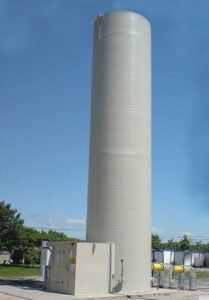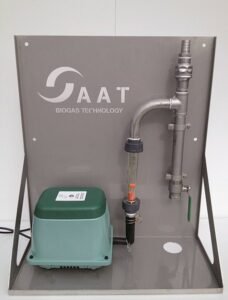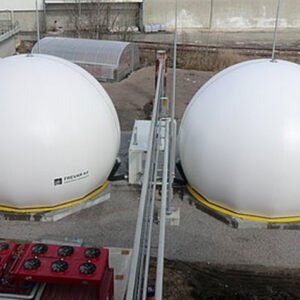Description
Desulphurization:
- Microbial desulphurization
- Desulphurization, air dosage
Microbial Desulphurization:
AAT microbial desulphurization is used to reduce hydrogen sulfide in biogas, WWTP, and ecological landfills. In addition to methane and carbon dioxide, toxic hydrogen sulfide is also produced during the fermentation process. This affects consumers and equipment. Hydrogen sulfide contains biogas that passes through a packaging tank. The microorganisms settle on the surface of the package, which uses oxygen to convert hydrogen sulfide into sulfur and primary sulfate. By adding artificial fertilizer as a nutrient to living organisms and circulating water, sulfur and sulfate are constantly washed away. The suspension is transferred to the inlet of the wastewater treatment plant or the remaining fermentation tank in case of biogas treatment.

Microbial Desulphurization
Details:
- Air blower (including check valve and failure stop)
- Water inlet
- Washing valve in the tank
- Heat exchanger
- Control cabin
- Maximum hydrogen sulfide 20000 ppm
- Reduction of hydrogen sulfide up to 50 ppm
Desulphurization, air dosage:
The AAT air pump ensures the dose of air required for desulphurization in the gastrointestinal tract. During the fermentation process in biogas plants, toxic hydrogen sulfide organic matter is produced during anaerobic degradation. Blowing air causes microorganisms to oxidize hydrogen sulfide in sulfur and primary sulfate. For this reason, air dosing is a very easy and at the same time very effective and economical method for desulfurization. The air pump used is designed for continuous operation and is therefore particularly long-lasting.

Desulphurization, air dosage






